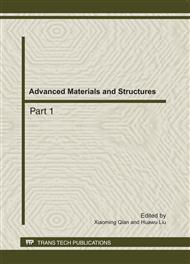p.387
p.391
p.396
p.400
p.406
p.411
p.415
p.419
p.423
A Study on Mathematical Modeling Technology for Magnetic-Fluid Grinding
Abstract:
The paper introduces the precision processing technology of grinding using magnetic fluid and presents the working mechanism of magnetic-fluid grinding. Based on Preston Equation, it also establishes a mathematical modeling for magnetic-fluid grinding, which is used to study the relationships between the effects of grinding and the variation of such technological parameters as the revolving speed of work-piece, the intensity of magnetic field, the distance between work-piece surface and magnetic center, the size of the magnetic fluid and grinding time, etc. Analysis on the grinding of Si3N4 ceramic-balls proves that the model has been well established.
Info:
Periodical:
Pages:
406-410
Citation:
Online since:
September 2011
Authors:
Keywords:
Price:
Сopyright:
© 2011 Trans Tech Publications Ltd. All Rights Reserved
Share:
Citation:


